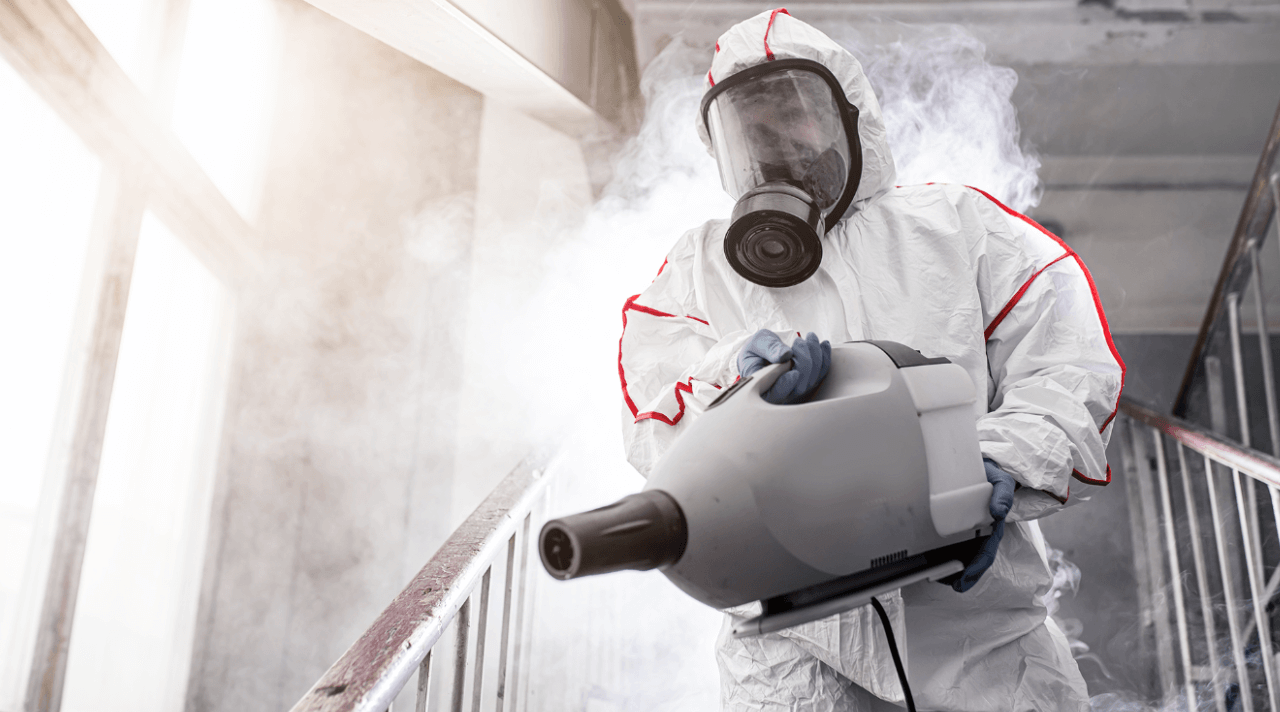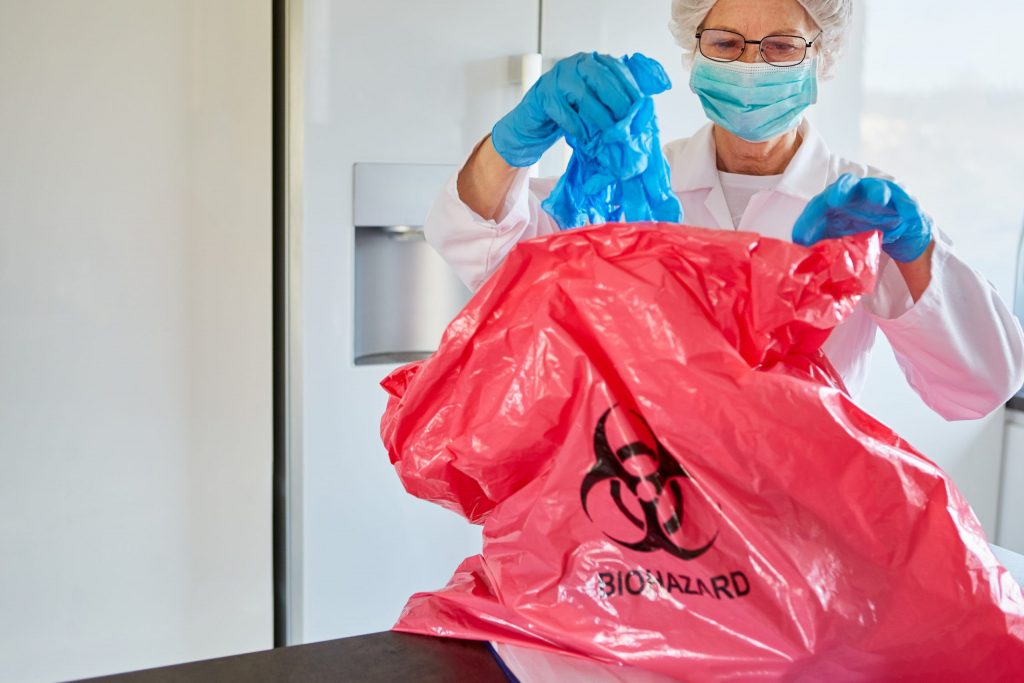Flood Damage Restoration: Quick and Efficient Healing for Your Home
Flood Damage Restoration: Quick and Efficient Healing for Your Home
Blog Article
Specialist Biohazard Cleaning and Decontamination for Blood, Bodily Fluids, and Hazardous Materials
In the realm of biohazard cleaning and decontamination for blood, physical liquids, and harmful materials, precision and know-how are vital. The prospective health dangers related to exposure to biohazards underscore the essential demand for careful handling and extensive cleanup. Specialized training outfits specialists with the understanding and skills required to address these unsafe circumstances effectively. Nonetheless, it is not simply about tidying up; the value of utilizing proper purification methods can not be overemphasized. As we navigate the intricate landscape of biohazard clean-up, understanding the subtleties of policies, conformity, and the customized equipment at play ends up being vital in ensuring a secure and comprehensive purification process.
Health Dangers of Biohazard Direct Exposure
Direct exposure to biohazards poses significant health and wellness threats that can result in severe consequences for areas and individuals alike. Biohazards encompass a broad variety of organic materials, including blood, bodily fluids, mold, germs, viruses, and other potentially contagious products. When individuals enter contact with these biohazards, whether with mishaps, incorrect handling, or ecological direct exposure, they deal with the danger of having significant illnesses or conditions.
Among the primary wellness threats related to biohazard direct exposure is the transmission of infectious illness. Bloodborne microorganisms such as HIV, hepatitis B and C, and numerous microorganisms can be existing in biohazardous materials, positioning a direct hazard to human health and wellness. Breathing in airborne biohazards like mold spores or coming right into contact with infected surface areas can likewise lead to breathing issues, allergic reactions, and various other damaging health and wellness effects.
In addition, biohazard exposure can have long-lasting wellness ramifications, with some illness materializing years after the first call (Blood Cleanup). Consequently, it is critical to prioritize proper biohazard cleansing and purification to minimize these health dangers and guarantee the safety and security of neighborhoods and people

Specialized Educating for Biohazard Cleanup
When it involves managing biohazard cleanup effectively and securely, specialized training plays an essential duty in making certain proper purification procedures are adhered to. Biohazard cleaning calls for particular knowledge and abilities to successfully minimize risks connected with bloodborne pathogens, bodily liquids, and unsafe materials. Specialists learnt biohazard cleaning undertake strenuous guideline on how to safely manage, get rid of, and deal with biohazardous materials to prevent contamination and exposure.
Specialized training for biohazard clean-up covers a variety of vital topics, including proper personal safety equipment (PPE) usage, bloodborne virus awareness, purification methods, and contaminated materials disposal methods. People educated in biohazard clean-up are geared up with the required proficiency to analyze contamination degrees, recognize potential threats, and execute ideal cleaning treatments in conformity with regulative requirements.
Continual training and education and learning are critical in the area of biohazard cleaning to remain updated on the most up to date purification innovations, safety procedures, and policies. By purchasing specialized training, biohazard clean-up experts can efficiently react to emergency cleanup circumstances and safeguard both public wellness and the environment.
Value of Correct Decontamination Techniques
Utilizing appropriate decontamination strategies is essential in biohazard cleanup to efficiently decrease and remove unsafe products wellness threats. Reliable decontamination not only makes sure the removal of visible traces of blood, bodily liquids, and various other biohazards yet also targets unseen microorganisms that may present major health dangers otherwise correctly removed. By complying with stringent purification procedures, trained experts can dramatically minimize the threat of exposure to dangerous microbes, infections, and bacteria that might result in infections or conditions.
Proper purification techniques entail using specialized tools and anti-bacterials that are particularly created to neutralize biohazards properly. Comprehensive cleansing and sanitation of contaminated locations are vital to protect against the spread of pathogens and make sure a safe atmosphere for occupants. Additionally, the right disposal of biohazardous waste complying with purification procedures is essential in avoiding contamination of various other surface areas or individuals.

Tools and Devices for Safe Cleaning
When dealing with blood, bodily fluids, or unsafe products, biohazard cleaning specialists count on specialized equipment to lessen exposure dangers and extensively decontaminate the affected location. Additionally, biohazard cleansing kits consisting of anti-bacterials, absorptive materials, and biohazard bags are made use their explanation of to safely get rid of and include of contaminated products.
Advanced cleansing tools like hospital-grade disinfectants, HEPA-filtered vacuum cleaners, and misting makers are utilized to sanitize surfaces and remove biohazards properly. Specialized equipment such as sharps containers and biohazard waste disposal bins are used to safely manage sharp objects and biohazardous waste products. By making use of the appropriate tools and devices, biohazard cleaning specialists can guarantee a thorough clean-up procedure that focuses on security and minimizes health risks for both employees and occupants of the damaged room.
Rules and Compliance in Biohazard Cleansing
Correct adherence to laws and conformity criteria is vital in biohazard cleaning to make certain the safety and security of both employees and the environment. Government companies such as OSHA (Occupational Safety and Wellness Administration) and the EPA (Environmental Protection Company) have actually established particular guidelines for biohazard clean-up procedures to minimize health and wellness risks and ecological contamination. These laws cover a variety of elements including the handling, transport, and disposal of biohazardous products, as well as the needed training and protective equipment required for workers associated with the clean-up process.
Biohazard cleaning business need to remain updated with these guidelines to assure that their operations fulfill the needed security requirements. Failing to follow these laws can result in extreme effects, consisting of fines, lawful activity, and endangering the wellness of individuals and the atmosphere. By adhering to rigid laws and compliance actions, biohazard cleaning companies can properly reduce risks and guarantee a detailed and secure cleanup process for all parties involved.
Conclusion
In conclusion, biohazard cleaning and purification need customized training, appropriate techniques, and adherence to regulations. Direct exposure to blood, bodily liquids, and hazardous materials postures significant health dangers, making it vital to utilize the appropriate Learn More Here devices and tools for secure cleaning. By following rigorous protocols and standards, professionals can successfully minimize the risks related to biohazard direct exposure and make sure the reference safety of both themselves and others.
As we browse the elaborate landscape of biohazard cleaning, recognizing the subtleties of laws, compliance, and the specialized devices at play comes to be critical in making certain a risk-free and detailed purification process. (Blood Cleanup)
When it comes to handling biohazard cleanup efficiently and safely, specialized training plays a basic duty in ensuring correct decontamination procedures are adhered to.Utilizing proper decontamination techniques is essential in biohazard cleaning to effectively eliminate unsafe products and reduce wellness risks. In addition, biohazard cleaning kits having anti-bacterials, absorbing materials, and biohazard bags are made use of to securely include and dispose of infected items.
Federal government firms such as OSHA (Occupational Security and Health Administration) and the EPA (Environmental Security Agency) have established specific guidelines for biohazard clean-up treatments to decrease health and wellness risks and ecological contamination.
Report this page